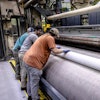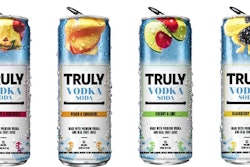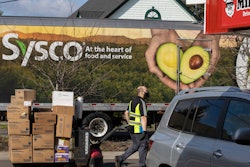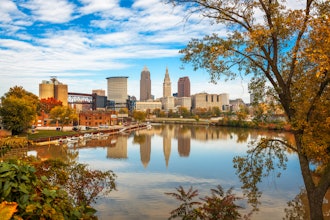
Consumer concerns over sustainability continue to drive food manufacturers to take a closer look at the materials used to package products – and motivate many of them to commit to improving their sustainability footprint.
According to a new report, Future of Packaging and Sustainability, produced by PMMI, The Association for Packaging Technologies, in cooperation with Euromonitor International, 44% of consumers use sustainable packaging and look for features such as recyclability (52%), biodegradability (49%), and refillable/reusable (41%). More than half, 52%, consider recyclable packaging to be sustainable. The report indicates a 22% post-pandemic growth in sustainable packaging claims.
Plastic is not yet seen by consumers as sustainable, driving a big push to end single use and increase use of paper and other alternatives, according to the PMMI report. Several food and beverage market sectors are influenced by these consumer perceptions.
Non-alcoholic beverages are moving quickly to recycled plastic, with Coca-Cola introducing the first made from 100% recycled PET (rPET) plastics in the 13.2-ounce size. The company’s target consumers are teens and 18–35-year-olds seeking portion control, as well as “price sensitive 20-ounce shoppers,” suggesting that the smaller, less expensive package size may displace some 20-ounce PET bottles on U.S. shelves.
The report indicates impulse package sizes will continue to shrink, with smaller multipacks and adjusted price-package mix, simultaneously cutting sugar per serving while boosting the bottom line.
Although plastic continues to be the predominant material in the food industry, many leading companies have embraced alternatives, including post-consumer recycled (PCR) materials, recyclable aluminum, and glass, and even in some cases paper/cardboard, bamboo, wood-based, or plant-based packaging.
While plastic pouches are convenient and cost-effective, consumers consider plastic to be the least sustainable material, and reducing plastic is a key green focus among consumers. But this move to more sustainable materials is not without challenges for manufacturers. Moving to paper or cardboard can be cost prohibitive and factors such as humidity and temperature continue to pose significant challenges to issues such as product quality and package integrity. Glass requires a lot of energy.
Recycled materials, while having increased consumer appeal, are more expensive and not always viable with no steady supply and inconsistent material quality. There is a clear dichotomy in a world where product appearance is important, but the focus is on reduction – which is very noticeable, for example in packages such as water bottles.
While there is a consumer desire for more sustainable packaging, single use remains in high demand because it is convenient and hygienic. While consumers want "easy" and affordable, there is a place for refill/reuse, if done properly. The report notes examples of this such as Starbucks cup and reusable grocery bags.
The PMMI report outlines key sustainability legislative drivers to increase sustainability in packaging:
Reducing plastic waste
- First state-level legislation on plastic in the U.S. was the August 2020 bottle bill, stipulating 15% recycled content by 2022, 50% by 2030. Maine and Oregon became the first U.S. states to introduce Extended Producer Responsibility (EPR) on plastic packaging in 2021. Measures vary at regional and national levels but broadly target material recyclability, recovery, and rates of recycled content. Plastic waste shipment bans further exert pressure to locally handle waste created.
Circular packaging
- There is impetus to create a circular economy for all packaging (from eco-design to re-use) affirmed in law, in corporate 2025/2030 pledges and initiatives such as the EU Circular Economy Action Plan.
- Packaging, waste, or environmental laws, mostly target the move to sustainable materials and increased recycling rates.
- More countries are using EPR and Deposit Return Systems to advance the sustainability movement.
Decarbonization
- The rise in country and regional commitments to meet net-zero carbon emissions by 2050 (to align with the 1.5 C Paris Agreement of 2015 and Glasgow Climate Pact of 2021) is shaping national laws and the environmental goals of brand users and packaging producers/converters.
- Priority on renewable and recycled substrates and conversion from fossil fuel to renewable-powered operations.
Several brands are making efforts towards the common vision of tackling plastic pollution, according to the PMMI report. Top manufacturers such as Coca-Cola, Nestle, Mars, PepsiCo, and Ferrero have all made commitments to make sweeping increases in reusable, recyclable, or compostable plastic packaging globally as well as increased use of post-consumer recycled (PCR) content in plastic packaging by 2025.
These types of commitments from top food manufacturers are leading the industry toward a more sustainable future. PACK EXPO Las Vegas (Sept. 11-13, 2023; Las Vegas Convention Center, Las Vegas) is the place to see the latest in sustainable solutions in packaging materials, machinery, and technology in action. The PACK EXPO Green program is the commitment of PACK EXPO and all its partners, vendors, and exhibitors working together to create a more sustainable world. Attendees can find information and resources to aid and advance their company’s unique sustainability goals with the PACK EXPO Sustainability Solutions Finder. For more information about PACK EXPO Las Vegas, go to packexpolasvegas.com.
PMMI, The Association for Packaging Technologies, is is the leading global resource for the packaging and processing supply chain.





















